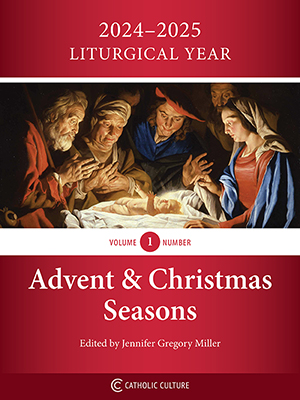Catholic Activity: Russian German Marriage Customs
Sister Mary Eloise Johannes describes some German Russian marriage customs, including parental consent and the mode of inviting guests to the wedding, as well as the ceremony itself.
DIRECTIONS
Some of the most interesting customs, both social and religious in character, center around courtship and marriage. When a Russian-German youth wished to marry, he asked two of his friends to act as Freiersmaenner, matrimonial agents, for him. With them the young man went to the home of his prospective bride where they visited with the girl's parents for a short time and then the Freiersmaenner presented the parents with the request of their client. This was a mere formality as the matter was usually settled before this time by the couple themselves. On the other hand, however, marriages were not planned without asking the parents' advice; and it frequently happened that the parents of the young couple had already discussed the marriage possibilities of their children.
As a rule the period of engagement was not long. Formerly the most popular season for marriages was during the autumn months after harvest; and it is still a favorite time despite the fact that many marriages take place in June and the summer months. In former days when both of the young people were from the same village the marriage was always performed in the parish church of the groom. On the second Sunday of the publication of the banns the young couple separately would visit the homes of their friends in the village to invite the unmarried members of the families to the wedding festivities. On the Sunday of the last announcement it was customary for two men, friends of the bridal pair, to go through the village with invitations known as Noetigen or Einladen, asking relatives and friends to the wedding. The men carried canes and as they went from house to house someone in each home tied a ribbon to the cane as a mark of acceptance. The invitation was usually in verse, sometimes impromptu. The following one was popular in Schoenchen:
Wir kommen nicht hergeritten, Wir kommen sicher geschritten; Braut and Braeutigam, sie lassen Euch bitten, Sic lassen Euch laden insgemein, Ihr sollt auch Hochzeitsgaeste sein, Zehn Gaens-die muessen dran, Neunzehn Huehner and der alte Hahn, Die sind gefuettert and so fett Wie ein altes Wagenbrett. Dann kommt ouch gleich the Kathrin Woes, Und kocht auch gleich the dicken Kloess, Sie kocht sie nach Belieben Und kocht auch gleich die roten Rueben. Poetz Blitz - Was faellt mir ein - Ich hab' ja vergessen den Branntwein. Wenn Ihr Uns unser Stoecklein ziert, So sagen wir auch wo Ihr hingehoert. (We do not come on horse astride But lusty foot it side by side; To speak to you for groom and bride. And beg of you without delay: "Be with us on our wedding day." Ten geese, they say, and many a hen In numbers round of nine and ten Are fattened for the festive meal And rounded like a wagon-wheel. Remember, too, good Aunt Katrin Will cook the dumplings thick and lean And serve them with the choicest meats Together with the reddest beets. The deucel We nearly did forget - Good brandy will be there, you bet. Now tie a ribbon on this cane And we'll invite you all again).
On the wedding day, the groom and his attendants walked to the home of the bride. Upon reaching the bride's home, the young man and his bride knelt on a white cloth spread on the floor to receive the blessing of the young lady's parents. The young couple and their attendants returned to the home of the groom's father where the bridal pair received the blessing of the young man's parents. Then the entire group walked to the church for the Nuptial High Mass which was attended by all the friends and relatives of the bridal couple. Today much of the early festivity is omitted and Freiersmaenner and Noetigen are merely familiar terms among the older people but the bride and groom still ask the blessing of parents and the Nuptial High Mass is always performed.
Formerly the wedding feast was held at the home of the groom. The newly-married couple stood at the door to receive the congratulations of all. The common greeting was, "Viel Glueck and Segen zum Ehestand" (happiness and blessing on your married state). The wedding festivities, the Hochzeit, often lasted two or three days but now a one-day celebration is the most common.
Activity Source: Your Home, A Church in Miniature by Compiled by The Family Life Bureau in the early 1950s, The Neumann Press, Long Prairie, Minnesota, 1994






